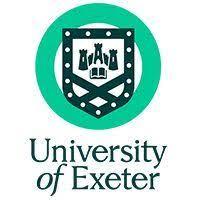
Why the ‘machine says no’: how asking for less can get you more…
We increasingly experience quality affordable digital solutions in everyday life. The best evolve, with improvements and added features in response to user feedback, and we generally don’t even ask for them. Providers just make technology better for us.
Yet the user experience is often so frustrating in higher education. Requests that seem reasonable take longer and longer to service. Technology gets harder, not easier, to use, and “machine says no” is increasingly the norm…
Why?
Foremost, resources and time don’t stretch to everything we need to do, let alone what we would want to do. For example, it should be possible to assemble a complete digital picture of any individual student’s engagement with educators, learning resources, the campus and their peers. Yet, in many places, even finding out who attended a given class is hard.
- Find more resources on digital transformation
- Use technology to boost productivity and beat burnout
- Learning the machine: shaping the future of creative education
The causes of this gap start with under-investment and lack of future-proofing core systems. For many things being asked of our systems now, technology dead ends are the result of too many poor decisions often taken years, if not decades, in the past. Compounding the challenge is the increasingly urgent need for new functionality – to enable, for example, multiple intakes for trans-border education or better support for hybrid learning. The net effect is that demand for new digital solutions is outstripping capacity to deliver, exacerbated by legacy systems that were never intended to support such functions.
So schools and directorates end up in an internal competition of sorts for investment in digital, where the rules might not be explicit and a decision to invest is a triumph in itself. Before projects even start the stakes are high. When investment is secured, delivery is limited by budget and time. We then cram in as many “requirements” as we can because experience shows that follow-on investment rarely...well, follows on.
To complicate matters, fragmented systems and data, patchworks of integrations and bespoke dashboards assemble a “nearly good enough” experience for now. Scratching the surface, however, exposes the underlying fragility. Few, if any, people know how the whole edifice works, and data quality is nobody’s responsibility. Adding functionality is fraught. And although institutional data joining, reconciling, being discoverable and being useful are readily talked about, these are fiendishly difficult to achieve in practice.
Technology delivery teams face an intractable dilemma: a torrent of need for digital now that can’t possibly be met with the resources and legacy fragilities they have to work with. Needs that should be fast to fulfil turn out to be prohibitively expensive or even infeasible. Examples include January student intakes, stackable credits and international education partnerships. All these have consequences for student record and finance systems that were never designed to deal with what would be needed.
Perhaps inevitably, each new ask is “strategically urgent”, which never allows enough time to re-engineer the core. The technology teams then add yet another layer of workarounds at the expense of further weakening the technology underpinnings.
As well as draining scarce technical capacity, every added layer makes even minor changes increasingly onerous and sapping of time, energy and will.
“The machine says no” because the machinery is fundamentally broken. The legacy of technical choices made years and sometimes decades ago drastically limits what can be achieved today, driving up cost and driving down delivery.
So what should universities do?
First and foremost, institutions need to recognise the constraints of the legacy systems and start doing something about it. They could re-imagine and reframe what higher education needs from technology – not just now but for the foreseeable future. Ideas such as re-composable curricula that Swansea University Digital Strategy is working towards will answer the questions needed to rebuild core systems for the future. This will probably take years but will yield big quality and productivity gains in the medium term.
“We are lucky at Swansea to have a leadership team that recognises both the challenge and the urgency of the task. We are all working to rethink our approach to learning and research. To make that happen continuous improvements, not silver bullets, are the key. This is a job for the whole university and, yes, financing is a challenge, but imagination is what we really need,” said Paul Westmore, the university’s chief digital and information officer.
Second, lower the stakes for everybody. Stop demanding new systems now and instead commit to people-centred incremental improvements to services and processes that improve the user experience. And, most importantly, answer the detailed questions in policy that enable digitisation. For example, Imperial College London’s people-centred policy work resulted in a digital-ready academic timetabling policy that unlocked the path to personalised academic timetables on devices of choice for students, and improved the annual process for academics, without needing a new timetabling system.
“Delivering more should not always be a huge shift for an institution, rather another step on a journey where people, processes and policies are the pathway. Mouldy bread will never deliver golden toast, regardless of how fancy your toaster is. Always start with the baker!” said Helena Smith, director of timetabling at Imperial.
Finally, build digital alliances that bring together academic, policy, operational, data and technology experts into multi-expertise, domain-aligned teams with the remit and budgetary authority to drive digitisation across whole domains such as education, student experience, research, estate, people, money and governance.
Digital is a lot more than the underpinning technology. Successful institutions will be the ones that do the hard work in policy, service design and building users’ digital confidence. With the right foundations, technology teams will have the conditions they need to develop the digital solutions that our educators and researchers crave, and that our students deserve.
Craig Walker is a director of HEdway Group. Lisa Harris is director of digital learning at University of Exeter Business School. Sarah Dyer is associate dean for teaching and learning at the University of Manchester.
Sarah Dyer, Craig Walker and Lisa Harris will be among the speakers at Digital Universities UK on 16-18 April at the University of Exeter. Their session is “Ideas that make a real difference”.
If you would like advice and insight from academics and university staff delivered direct to your inbox each week, sign up for the Campus newsletter.





